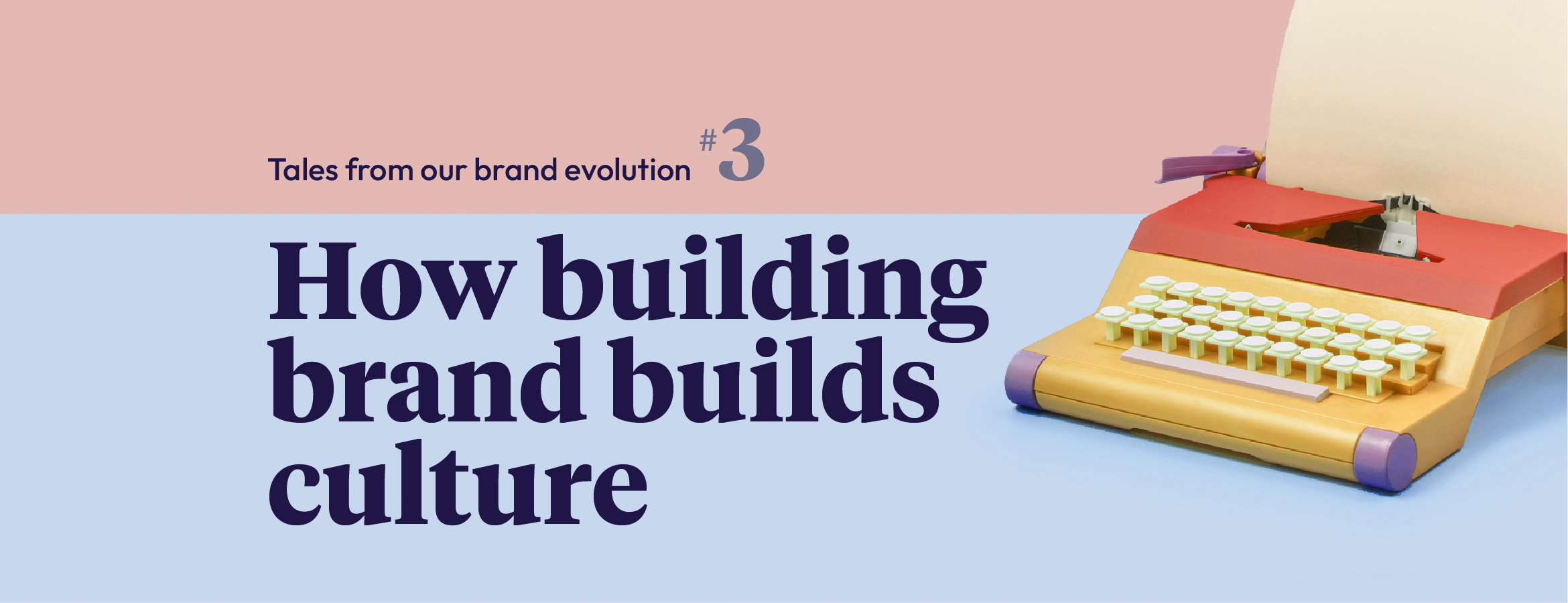One of the top concerns of today’s leaders is employee engagement. In fact, we’ve worked on a variety of projects to help our clients in this regard as they work through big companywide changes and look for ways to build better connections. We’ve helped create employee brand campaigns, employee messaging briefs, voice & tone guidelines for mergers and acquisitions, employee brand workshops, and listening tours—all designed to create consistent employee brand experiences and bring everyone together in new ways.
With our own rapid growth over the last couple of years—and the move to hybrid workstyles—we could say we were in need of a rekindling as a team, too. So, our brand evolution gave us the perfect opportunity to expand not only our look and feel, but also our agency culture to reflect a modern and inclusive vibe. Here’s how we did it as a team, what we gained, and what it can do for yours, too.
We learned to let go.
Our agency was founded by a three-person team (affectionately named The Stooges). When it came to our business strategy and brand, they were able to align and design with speed and synchronicity. Their “get-it-done” approach is still a deeply valued principle at the agency, but it has matured over time. Our brand evolution got a lot more people involved in different elements of our creative strategy and execution—and their perspectives and ideas enriched our brand. But it isn’t always easy for leaders to let it happen. Our advice: Be patient with each other, as it’s a cultural transition, but hold each other accountable for achieving the end goal.
We welcomed the hard conversations.
We tend to be a “yes and” kind of team—always encouraging people to flex their creative thinking. While this is great for brainstorming at the beginning of a project, we began to notice a spinning effect as the project progressed. We wanted to hear all the ideas…and then it was really hard to cull all the ideas. How do we stay true to our “yes and” personality and our “get it done” approach at the same time? In any collaborative endeavor, you have to stop the spin. We reduced the number of stakeholders, created smaller task teams, and leaned into the three Ds (debate, decide, deliver). Pro tip: Culture can help build consensus and vice versa. In our case, once we decided on a cocktails theme for naming our color palette, our festive-beverage-loving team was on board!
We focused on what was really important to all of us.
What defines you as an agency? This is the perfect time to review not only your look and feel, but also your business focus and your company values. What talents do you want to showcase and what talents do you want to attract? It’s an opportunity to identify the work you’re proud of and tell those stories in new and interesting ways—because they could in turn bring more of that kind of work your way. True story: When we gathered our team to talk about agency values, we realized that there was a lot more that we wanted to say. So, not only did we expand them from three to six, but we also developed a new illustration style for them!
We supported a more inclusive atmosphere.
In most organizations, those who have been there the longest often have the biggest voice. But a brand refresh is a chance for people who weren’t here at the beginning to be part of building our new brand—to bring their voices and their perspectives into the mix. And that means everyone gets to feel like they’re part of the brand—client services, creatives, everyone. We all participated in our day in the life video and added our own bits of improv to make it more “us.” Getting real:We spent quite a bit of time on the sprites on our people page, and it was intentional—because it was important for people to feel like they could express themselves as individuals.
As with the conclusion of any successful project, a brand refresh pulls you all together and makes you generally feel great about where you work. When it’s something you had a hand in, there’s a sense of pride and personal investment. And that feeling goes a long way when it comes to employee engagement and team morale.


